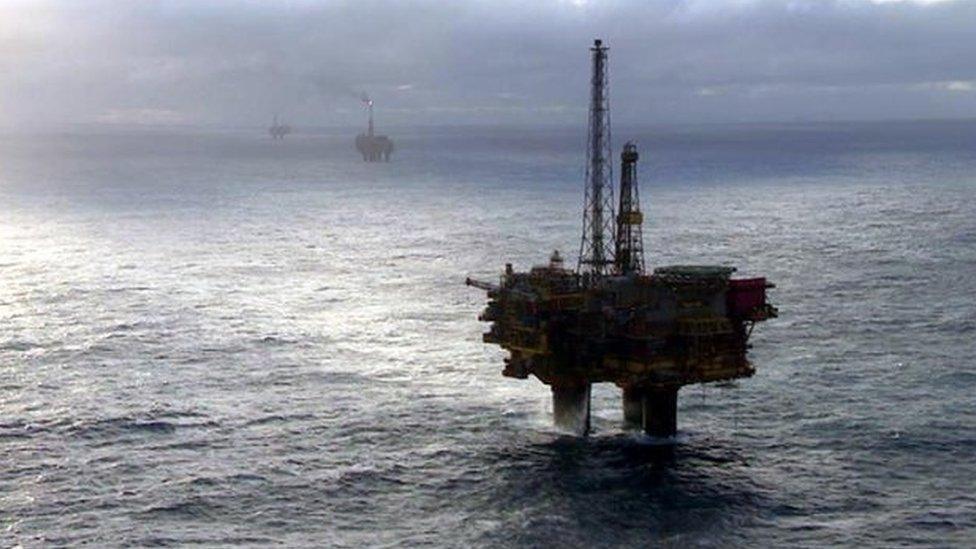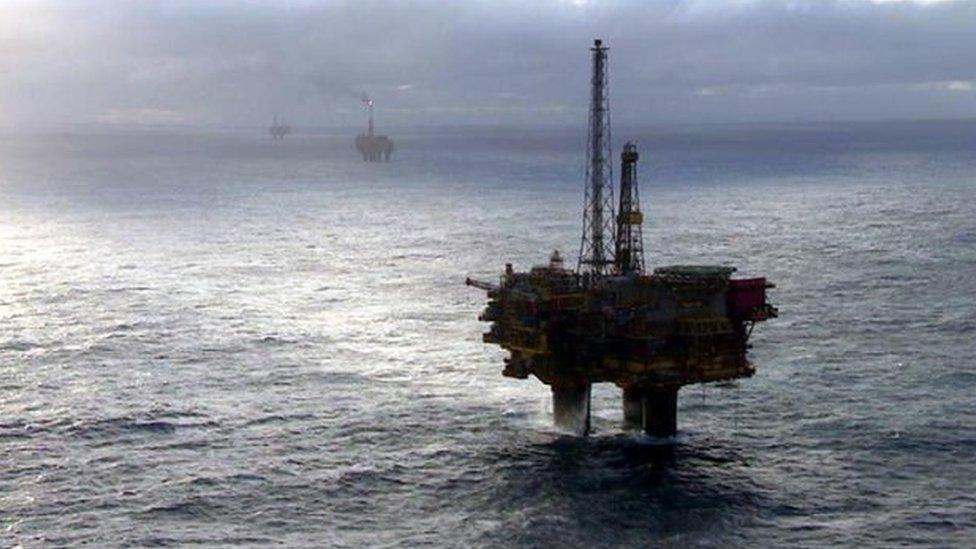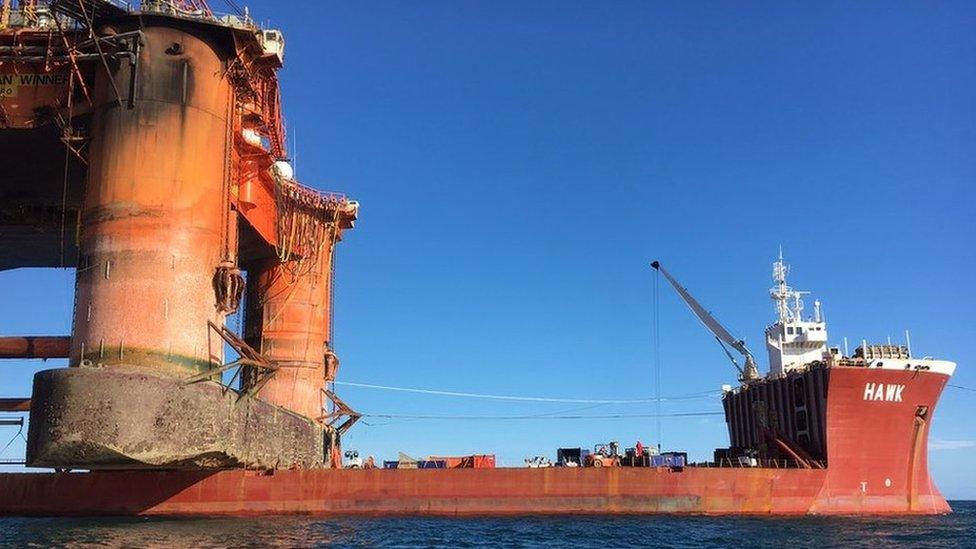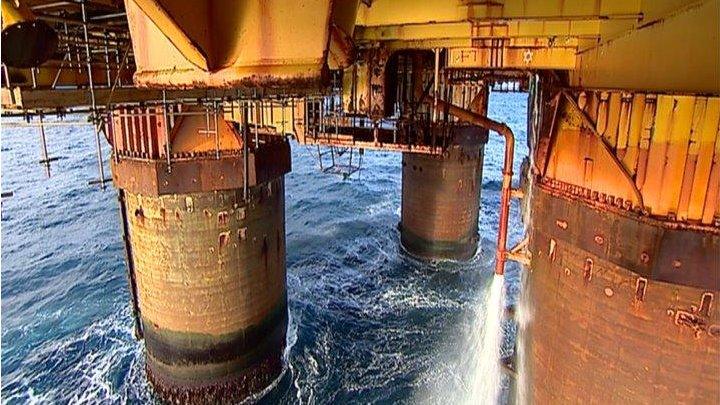Q&A: What is Brent Delta?
- Published

Ship approaches Brent Delta at night
One of the first major decommissioning projects in the North Sea has been completed with the removal of the Brent Delta platform from its legs. Shell hopes to be able to leave the legs in the sea - a move that has caused concern among environmental groups.

What is Brent Delta?

Brent Delta is the first major piece of infrastructure to be decommissioned in the North Sea
Brent Delta was one of the first platforms to be built in the very early days of Britain's oil and gas industry.
It sits about 115 miles (185km) north-east of Shetland in a cluster of four platforms which make up the Brent field. Its sister, Brent Bravo, produced its first oil in 1976.
At its peak, in 1982, the four platforms were producing more than half a million barrels of oil a day.
Being one of the first, it is now at the end of its life and has to be removed but that is not as easy as you would think.
Unusually for a platform, the legs of Brent Delta are made of concrete which makes it much more difficult to decommission than one with steel legs.
Although the "topside" has now been removed - that's the bit where all the work happens - the legs will remain in place.
How significant a moment is the decommissioning of Brent Delta?
Brent Delta is one of the first major pieces of infrastructure to be decommissioned in the North Sea and so all eyes are on it.
In fact, because our oil and gas industry is reaching maturity it is one of the first significant decommissioning projects in the world.
On top of that, the Brent field is iconic because traders the world over deal in so-called "Brent Crude".
The North Sea is rapidly entering its decommissioning phase.
More than 100 platforms are forecast to be completely or partially removed over the next decade in the waters of the UK and Norway.

An oil platform being transported from Stavanger, Norway, to the Brent oil and gas field in 1975
What's going to happen to the platform?
The platform was removed from its legs by the huge double-hulled ship Pioneering Spirit.
Over the next few days it will begin the long journey towards its final resting place in Teesside.
Just outside the harbour, it will be transferred onto a smaller barge to be dragged into position.
A new quay has been built at Able UK's yard to receive the platform and the workforce is on standby to begin dismantling it.
It's estimated that 97% of the structure will be recycled and the work will take 12 months.
Is it controversial?
Not this bit.
The Brent field is being decommissioned in two stages, the first of which is the removal of everything but the legs of Brent Delta.
Stage two is everything else and that is the controversial bit.
Shell has proposed leaving the concrete legs in the sea and allowing them to be subjected to the mercies of the elements.
Their argument is that this is much safer option than trying to remove them and that the impact on the environment, when they do eventually crumble, will be minimal.
But environmental groups are unconvinced and suggest Shell's plans could breach international law.
The company has lodged its plans with the UK government and it is up to them to decide whether to let Shell go ahead.
- Published28 April 2017

- Published8 February 2017

- Published23 November 2016

- Published5 July 2016
